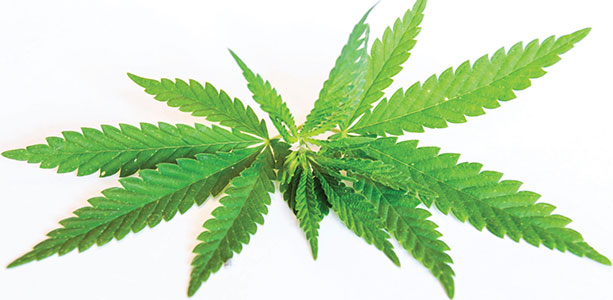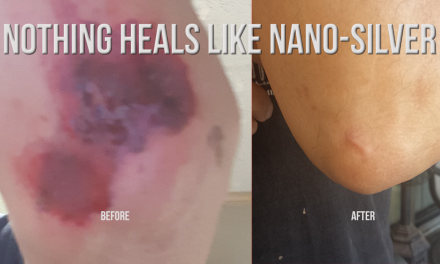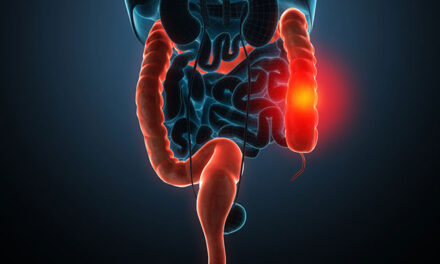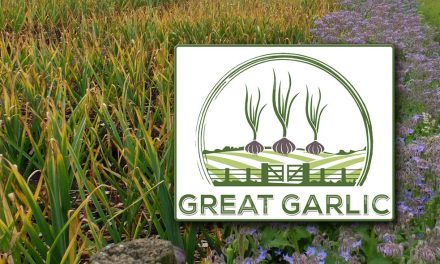Marijuana, also known as cannabis, has been used as a botanical medicine for hundreds, and perhaps even thousands, of years. Research over the past 50 years has begun to shed more light on how this plant works in our bodies to produce some of the health and medical benefits researchers have identified thus far. Even the Surgeon General of the United States of America has declared, “We have some preliminary data showing that for certain medical conditions and symptoms, marijuana can be helpful.”1
The most compelling evidence has shown that marijuana, or more specifically its medical constituents, cannabinol and THC, have properties that are beneficial in the following areas:2
- The reduction of nerve related pain
- Control of seizures
- Improvement in sleep
- Control of anxiety
- Reduction of inflammation
- Antioxidant protection
- The treatment of specific cancers
- Slowing the progression of Alzheimer’s
How it Works
There are cannabinoid receptors on many cells throughout the body, including the brain, lungs, liver, kidneys and various part of our immune system. These receptors are activated when they are exposed to cannabinol and THC, causing the following observed reactions:
- Higher levels of THC are responsible for the euphoric feelings associated with the smoking of marijuana.
- When equal levels of cannabinol (CBN) and THC are present (1 to 1 ratio) there is a very significant impact on breast cancer cells, as well as other aggressive cancer cells. Scientists have observed cancer cells shrinking, dying and even reverting back to normal cell function.3
- High levels of only CBN have been shown to provide symptomatic relief of neuropathic pain in adults with multiple sclerosis and rheumatoid arthritis. In fact, Health Canada has approved a new drug, Sativex, otherwise known as Cannabis sativa, for the treatment of the aforementioned conditions.4
- Cannabinol has also exhibited anti-anxiety, anti-psychotic, anti-convulsant, neuroprotective effects, anti-inflammatory and anti-oxidant properties. It is this powerful combination of brain related benefits, which is thought to have the ability to slow the progression of Alzheimer’s and possibly other brain related conditions.5
The interesting, and significant, finding in all of the research is that these health benefits are all possible without producing any of the euphoric reactions associated with marijuana. This is extremely important, since it is the recreational drug component that has been one of the barriers to the acceptance of cannabis being used for medical purposes. The two components need to be separated and treated completely differently in order to allow medical conditions to be treated objectively based on the emerging science.
The Deeper Cellular Understanding
More than 15,000 peer reviewed scientific articles have been published on the chemical and pharmacologic uses of cannabis and cannabinoids (CBD). There have also been 33 published controlled clinical trials, in the U.S., documenting the measurable benefits of treatments utilizing one of the cannabinoid components.6
It is important to explain more exactly how this botanical causes these beneficial reactions in the body.
- Mediators are biochemicals, such as enzymes, that cause the up regulation (increase) or down regulation (decrease) of certain other biochemicals that control inflammation, pain messages, the genetic on and off switches for cancer and other important metabolic reactions. CBD is a mediator that up regulates the good chemicals and down regulates the bad or negative chemicals in the body leading to the prevention and/or the reversal of various health challenges.
- Cannabinolic acid (CBDA) inhibits MDA-MB231, which stops breast cancer cells from spreading. And, CBD stops these same cells from multiplying. If breast cancer cells cannot multiply or spread, then the disease can be controlled to allow diet and other proven natural or pharmaceutical agents to kill the cancer cells or cause them to return to normal cellular activity.
- Many cancers are enabled by a genetic on and off switch, known as the 1D-1 gene. CBD, in the form of cannabis oil extract was able to turn off the over expression of this 1D-1 gene, thus stopping cancer cells from moving to other tissues and, in some cases, causing these cancer cells to return to normal cellular function. This off switch by the cannabis oil extract proved effective for breast cancer, leukemia, lung cancer, ovarian cancer and brain cancer, all of which have normally occurring high levels of the 1D-1 gene.7
Detoxification – Systematically removing accumulated toxins from the body can significantly reduce the burden placed on the immune system and other important metabolic functions. This will allow more energy and immune protective activity to be directed at the primary health challenge. Proven detoxification methods include exercise, sauna, steam bathes, diet, specific supplements and intravenous treatments such as EDTA chelation therapy or hydrogen peroxide therapy. The existing level of toxicity can be measured via blood, hair and urine tests, as well as symptoms analysis. Then these same tests can be used to measure the success of various detoxification efforts. These detoxification efforts can then create a better environment for the use of various treatments, which can include cannabis.
Nutrition – The human body needs very high levels of essential oils, vitamins, minerals and enzymes in order for each of our 60 trillion cells to function properly. When cells are not properly nourished, this puts a strain on our organs and our operating systems, including the immune system. A diet of whole foods, including vegetables, fruits, nuts, seeds, healthy oils, omega fish and organic poultry will help to optimize cellular function, thus making treatment protocols more likely to achieve their desired results. This type of diet also helps to ensure a proper pH balance in the body (7.0 – 7.4), which is the ideal environment for optimal healing.
Stress Management – Stress is involved, or influences, about 80% of all health challenges and drains the body of vital nutrients, such as B vitamins. Using stress management techniques, such as yoga, meditation, deep breathing and hypnotherapy can help to reduce the impact of stress on treatment protocols for chronic disease. Reducing stress also helps to reduce acid levels in the body, thus insuring the maintenance of a healthy and healing pH level in the body.
Sleep Function – When we sleep, our bodies experience the most significant levels of balancing (homeostasis), detoxification and re-energizing. Therefore, it is very important to ensure sound sleep of at least 7 to 9 hours every night. Eating very little after dinner, avoiding caffeine and other stimulants and clearing the mind of troubling or perplexing topics best accomplish this. Some people may need to use calming audiotapes, meditation or supplements, such as 5HTP or melatonin to help achieve this state of sound sleep.
Cannabis for cancer treatment, the science
There have been many impressive scientific studies over the past several years on the effectiveness of hemp extracts in the treatment of various forms of cancer. Here is a partial list of these studies, which clearly illustrates the potential benefit for the medical application of hemp extracts against the most serious disease we know.
1. A study published in the British Journal of Cancer, conducted by the Department of Biochemistry and Molecular Biology at Complutense University in Madrid, determined that Tetrahydrocannabinol (THC) and other cannabinoids inhibit tumor growth. They were responsible for the first clinical study aimed at assessing cannabinoid antitumoral action. Cannabinoid delivery was safe and was achieved with zero psychoactive effects. THC was found to decrease tumor cells in two out of the nine patients.9
2. A study published in The Journal of Neuroscience examined the biochemical events in both acute neuronal damage and in slowly progressive, neurodegenerative diseases. They conducted a magnetic resonance imaging study that looked at THC (the main active compound in marijuana) and found that it reduced neuronal injury in rats. The results of this study provide evidence that the cannabinoid system can serve to protect the brain against neurodegeneration.10
3. A study published in The Journal of Pharmacology And Experimental Therapeutics already acknowledged the fact that cannabinoids have been shown to possess antitumor properties. This study examined the effect of cannabidiol (CBD, non-psychoactive cannabinoid compound) on human glioma cell lines. The addition of cannabidiol led to a dramatic drop in the viability of glioma cells. Glioma is the word used to describe brain tumor. The study concluded that cannabidiol was able to produce a significant antitumor activity.11
4. A study published in the Journal Molecular Cancer Therapeutics outlines how brain tumors are highly resistant to current anticancer treatments, which makes it crucial to find new therapeutic strategies aimed at improving the poor prognosis of patients suffering from this disease. This study also demonstrated the reversal of tumor activity in Glioblastoma multiforme.12
5. A study published in the journal Breast Cancer Research and Treatment, conducted by the California Pacific Medical Centre, determined that cannabidiol (CBD) inhibits human breast cancer cell proliferation and invasion. They also demonstrated that CBD significantly reduces tumor mass.13
6. A study published in The Journal of Pharmacology and Experimental Therapeutics determined that THC as well as cannabidiol dramatically reduced breast cancer cell growth. They confirmed the potency and effectiveness of these compounds.14
7. A study published in the Journal Molecular Cancer showed that THC reduced tumor growth and tumor numbers. They determined that cannabinoids inhibit cancer cell proliferation, induce cancer cell apoptosis, and impair tumor angiogenesis (all good things). This study provides strong evidence for the use of cannabinoid-based therapies for the management of breast cancer.15
8. A study published in the Proceedings of the National Academy of Sciences of the United States of America (PNAS) determined that cannabinoids inhibit human breast cancer cell proliferation.16
9. A study published in the Journal Oncogene, by Harvard Medical Schools Experimental Medicine Department, determined that THC inhibits epithelial growth factor induced lung cancer cell migration and more. They go on to state that THC should be explored as novel therapeutic molecules in controlling the growth and metastasis of certain lung cancers.17
10. A study published in The FASEB Journal by the Institute of Toxicology and Pharmacology, from the Department of General Surgery in Germany, determined that cannabinoids inhibit cancer cell invasion. Effects were confirmed in primary tumor cells from a lung cancer patient. Overall, data indicated that cannabinoids decrease cancer cell invasiveness.18
11. A study published in the journal Cancer Prevention Research, conducted by Harvard Medical School, investigated the role of cannabinoid receptors in lung cancer cells. They determined its effectiveness and suggested that it should be used for treatment against lung cancer cells.19
12. A study published in the journal Prostate illustrates a decrease in prostatic cancer cells by acting through cannabinoid receptors.20
13. A study published in the Indian Journal of Urology outlined multiple studies proving the effectiveness of cannabis on prostate cancer.21
14. Another study published in the British Journal of Pharmacology determined that clinical testing of CBD against prostate carcinoma is a must. That cannabinoid receptor activation induces prostate carcinoma cell apoptosis. They determined that cannabidiol significantly inhibited cell viability.22
15. A study published in the Journal Molecular Pharmacology recently showed that cannabinoids induce growth inhibition and apoptosis in mantle cell lymphoma. The study was supported by grants from the Swedish Cancer Society, The Swedish Research Council, and the Cancer Society in Stockholm.23
16. A study published in the International Journal of Cancer also determined and illustrated that cannabinoids exert antiproliferative and proapoptotic effects in various types of cancer and in mantle cell lymphoma.24
17. A study published in the journal Molecular Cancer Research conducted by the Department of Pharmacology and Toxicology by Virginia Commonwealth University determined that cannabinoids induce apoptosis in leukemia cells.25
18. A study published in the journal Molecular Cancer Research shows that cannabinoids are potent inhibitors of cellular respiration and are toxic to highly malignant oral tumors.26
19. A study published in Cell Death & Differentiation determined that THC reduces the viability of human HCC cell lines (Human hepatocellular liver carcinoma cell line) and reduced their growth.27
20. A study published in Cancer Research determined that cannabinoid receptors are expressed in human pancreatic tumor cell lines and tumor biopsies at much higher levels than in normal pancreatic tissue. Results showed that cannabinoid administration induced apoptosis. They also reduced the growth of tumor cells, and inhibited the spreading of pancreatic tumor cells.28
Who is against the medicinal use of marijuana?
There has been steady resistance to the legalization of marijuana. One of the biggest reasons is the confusion between recreational marijuana, medical marijuana and CBD. Medical marijuana is under the jurisdiction of individual states and allows Medical Doctors to utilize this product for pain relief, some eye disorders and other health challenges. Cannabidiol (CBD) is a non-medical hemp product approved in all fifty states as a health improvement nutritional supplement. This general resistance usually comes from older and/or more conservative people who view marijuana from only one perspective; it’s use as a recreational drug. Many younger people see this as hypocrisy since alcohol and tobacco are legal and cause more problems in terms of ill health, lost productivity and death than marijuana could possibly cause. In addition to this general, albeit confused, resistance, there are other specific groups who are opposed to the legalization of marijuana, and remember, most of their reasons also do not properly distinguish between recreational use and medical use.
Cigarette Makers and Sellers – Unless the existing cigarette industry can control the marijuana industry, they will always lobby against it because they fear the loss of some of their huge profits from the sale of cigarettes.
Alcohol Makers and Users – This group will resist for the same reasons as the cigarette industry. If people switch from alcohol to marijuana use, there is a potential loss of millions, or even billions, of dollars in profits.
Prisons – Prisons are an economic growth industry for many communities and thousands of workers. Marijuana accounts for more than half of all drug arrests in the country. If recreational marijuana were legalized, all of these arrests and imprisonments would disappear. Private prisons would lose money, jobs would be lost and communities dependent on these jobs would suffer economically.
It also stands to reason that prison employee unions would also lobby against the legalization of marijuana.
Police Unions – Police also benefit from the illegal status of marijuana. About 1 million arrests each year involve the possession of marijuana. If marijuana were legalized, then there could be a reduced need for police officers and federal drug enforcement officers to search for marijuana growers, importers and users. Farmers would be licensed and prices would be stabilized, making this illegal industry far less viable.
Pharmaceutical Companies – If medical marijuana is proven to be as effective, inexpensive and safe as existing science is indicating, then many prescription and over-the-counter medications will no longer be necessary. This could cost big pharma billions, if not trillions, of dollars in profits.
Doctors, Hospitals and Insurance Companies – If some diseases were able to be treated more safely, effectively, and at less cost, the entire medical industry would have fewer high cost tests and treatments, leading to a dramatic loss of patients and profit.29
Final Thoughts
As usual, a proven health advancement is being resisted by special interests and a lack of clarity about its many benefits. It took years to gain the acceptance of prenatal vitamins, causing many babies to be born with birth defects and many mothers and babies to die unnecessarily. Co-enzyme Q10 can help prevent heart disease, reverse kidney disease and slow the advance of Parkinson’s Disease. And vitamin D3 can help prevent breast cancer. All of these scientifically proven natural health benefits have been facing stiff resistance from special interests for years. Many millions of people will suffer and die prematurely due to the resistance to these and other similar health and medical breakthroughs.
Medical marijuana, cannabis, CBD and CBN have joined this list of evidence-based health solutions that are being resisted due to ignorance or greed or both. Patient advocates, scientists, progressive doctors and courageous media people are now working fairly independently to help advance the use of medical cannabis. If they could combine and better coordinate their efforts, perhaps medical marijuana, in all of its proven forms, could move forward much faster and spare the unnecessary suffering, pain and expense that is caused by the pursuit of profit over the health and welfare of our population.
References
- Mercola, Joseph, 2015. Top US Doctor Says Medical Marijuana May Help Some Conditions. Dr. Joseph Mercola’s web site online, Feb. 17, 2015.
- Ibid
- Ibid.
- Costa, Barbara, et al.2007. The non-psychoactive cannabis constituent cannabidiol is an orally therapeutic agent in rat chronic inflammatory and neuropathic pain. Science Direct online. Originally from European Journal of Pharmacology 556 (2007) 75-83.
- Ibid.
- Mercola, Joseph, 2015. Top US Doctor Says Medical Marijuana May Help Some Conditions. Dr. Joseph Mercola web site online, Feb. 17, 2015.
- Ditchfield, Jeff and Thomas Mel, 2014. The Medical Cannabis Guidebook: The Definitive Guide To Using and Growing Medicinal Marijuana. Green Candy Press, San Francisco, CA.
- Schwartz, Carly, 2014, Marijuana Drastically Shrinks Aggressive Form Of Brain Cancer, New Study Finds. Huffington Post online.
- M Guzmán, M J Duarte, C Blázquez, J Ravina, M C Rosa, I Galve-Roperh, C Sánchez, G Velasco and L González-Feria. A pilot clinical study of Δ9-tetrahydrocannabinol in patients with recurrent glioblastoma multiforme. British Journal of Cancer (2006) 95, 197–203. doi:10.1038/sj.bjc.6603236
- M. van der Stelt, W. B. Veldhuis, P. R. Bär, G. A. Veldink, J. F. G. Vliegenthart, and K. Nicolay. Neuroprotection by Δ9-Tetrahydrocannabinol, the Main Active Compound in Marijuana, against Ouabain-Induced In Vivo Excitotoxicity. The Journal of Neuroscience, 1 September 2001, 21(17): 6475-6479;
- Paola Massi, Angelo Vaccani, Stefania Ceruti, Arianna Colombo, Maria P. Abbracchio and Daniela Parolaro. Antitumor Effects of Cannabidiol, a Nonpsychoactive Cannabinoid, on Human Glioma Cell Lines. JPET March 2004 vol. 308 no. 3 838-845
- Sofía Torres, Mar Lorente, Fátima Rodríguez-Fornés, Sonia Hernández-Tiedra, María Salazar, Elena García-Taboada, Juan Barcia, Manuel Guzmán and Guillermo Velasco. A Combined Preclinical Therapy of Cannabinoids and Temozolomide against Glioma. Mol Cancer Ther January 2011 10; 90
- McAllister SD, Murase R, Christian RT, Lau D, Zielinski AJ, Allison J, Almanza C, Pakdel A, Lee J, Limbad C, Liu Y, Debs RJ, Moore DH, Desprez PY. Pathways mediating the effects of cannabidiol on the reduction of breast cancer cell proliferation, invasion, and metastasis. Breast Cancer Res Treat. 2012 May;133(1):401-4.
- Alessia Ligresti, Aniello Schiano Moriello, Katarzyna Starowicz, Isabel Matias, Simona Pisanti, Luciano De Petrocellis, Chiara Laezza, Giuseppe Portella, Maurizio Bifulco and Vincenzo Di Marzo. Anti-tumor activity of plant cannabinoids with emphasis on the effect of cannabidiol on human breast carcinoma. JPET May 25, 2006 106.105247
- María M Caffarel, Clara Andradas, Emilia Mira, Eduardo Pérez-Gómez, Camilla Cerutti, Gema Moreno-Bueno, Juana M Flores, Isabel García-Real, José Palacios, Santos Mañes, Manuel Guzmán and Cristina Sánchez. Cannabinoids reduce ErbB2-driven breast cancer progression through Akt inhibition. Molecular Cancer 2010, 9:196
- Luciano De Petrocellis, Dominique Melck, Antonella Palmisano, Tiziana Bisogno, Chiara Laezza, Maurizio Bifulco, Vincenzo Di Marzo. The endogenous cannabinoid anandamide inhibits human breast cancer cell proliferation. Proc. Natl. Acad. Sci. USA Vol. 95, pp. 8375–8380, July 1998
- Preet A, R K Ganju, J E Groopman. Δ9-Tetrahydrocannabinol inhibits epithelial growth factor-induced lung cancer cell migration in vitro as well as its growth and metastasis in vivo. Oncogene (2008) 27, 339–346; doi:10.1038
- Ramer R, Bublitz K, Freimuth N, Merkord J, Rohde H, Haustein M, Borchert P, Schmuhl E, Linnebacher M, Hinz B. Cannabidiol inhibits lung cancer cell invasion and metastasis via intercellular adhesion molecule-1. The FASEB J. 2012 Apr;26(4):1535-48. doi: 10.1096/fj.11-198184. Epub 2011 Dec 23.
- Preet A, Qamri Z, Nasser MW, Prasad A, Shilo K, Zou X, Groopman JE, Ganju RK. Cannabinoid receptors, CB1 and CB2, as novel targets for inhibition of non-small cell lung cancer growth and metastasis. Cancer Prev Res (Phila). 2011 Jan;4(1):65-75. doi: 10.1158/1940-6207.CAPR-10-0181. Epub 2010 Nov 19.
- Mimeault M, Pommery N, Wattez N, Bailly C, Hénichart JP. Anti-proliferative and apoptotic effects of anandamide in human prostatic cancer cell lines: implication of epidermal growth factor receptor down-regulation and ceramide production. Prostate. 2003 Jun 15;56(1):1-12.
- Juan A. Ramos, Fernando J. Bianco. The role of cannabinoids in prostate cancer: Basic science perspective and potential clinical applications. Indian J Urol. 2012 Jan-Mar; 28(1): 9–14.
- De Petrocellis L, Ligresti A, Schiano Moriello A, Iappelli M, Verde R, Stott CG, Cristino L, Orlando P, Di Marzo V. Non-THC cannabinoids inhibit prostate carcinoma growth in vitro and in vivo: pro-apoptotic effects and underlying mechanisms. British Journal of Pharmacology 2013 Jan;168(1):79-102. doi: 10.1111/j.1476-5381.2012.02027.x.
- Gustafsson Kristin, Christensso Birger, Sander Birgitta, Flygare Jenny. Cannabinoid Receptor-Mediated Apoptosis Induced by R(+)-Methanandamide and Win55,212-2 Is Associated with Ceramide Accumulation and p38 Activation in Mantle Cell Lymphoma. Molecular Pharmacology November 2006 vol. 70 no. 5 1612-1620
- Gustafsson Kristin, Wang Xiao, Severa Denise, Eriksson Maeve, Kimby Eva, Merup Mats, Christensson Birger, Flygare Jenny, Sander Birgitta. Expression of cannabinoid receptors type 1 and type 2 in non-Hodgkin lymphoma: Growth inhibition by receptor activation. International Journal of Cancer 1 September 2008, Volume 123, Issue 5, pages 1025–1033
- Jia W, Hegde VL, Singh NP, Sisco D, Grant S, Nagarkatti M, Nagarkatti PS. Delta9-tetrahydrocannabinol-induced apoptosis in Jurkat leukemia T cells is regulated by translocation of Bad to mitochondria. Mol Cancer Res. 2006 Aug;4(8):549-62.
- Whyte DA, Al-Hammadi S, Balhaj G, Brown OM, Penefsky HS, Souid AK. Cannabinoids inhibit cellular respiration of human oral cancer cells. Pharmacology. 2010;85(6):328-35. doi: 10.1159/000312686. Epub 2010 Jun 2.
- Vara D, Salazar M, Olea-Herrero N, Guzmán M, Velasco G, Díaz-Laviada I. Anti-tumoral action of cannabinoids on hepatocellular carcinoma: role of AMPK-dependent activation of autophagy. Cell Death Differ. 2011 Jul;18(7):1099-111. doi: 10.1038/cdd.2011.32. Epub 2011 Apr 8.
- Arkaitz Carracedo, Meritxell Gironella, Mar Lorente, Stephane Garcia, Manuel Guzmán, Guillermo Velasco, and Juan L. Iovanna. Cannabinoids Induce Apoptosis of Pancreatic Tumor Cells via Endoplasmic Reticulum Stress–Related Genes. Cancer Res July 1, 2006 66; 6748
- Mercola, Joseph, 2015. Top US Doctor Says Medical Marijuana May Help Some Conditions. Dr. Joseph Mercola’s web site online, Feb. 17, 2015.











